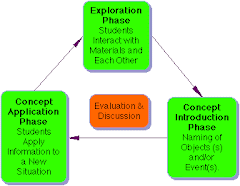Jean Piaget’s Background:
Jean Piaget was born in Switzerland in 1896. After receiving his doctoral degree at age 22, Piaget formally began a career that would have a profound impact on both psychology and education. After working with Alfred Binet, Piaget developed an interest in the intellectual development of children. Based upon his observations, he concluded that children were not less intelligent than adults, they simply think differently. Albert Einstein called Piaget’s discovery “so simple only a genius could have thought of it.” Piaget’s stage theory describes the cognitive development of children. Cognitive development involves changes in cognitive process and abilities. In Piaget’s view, early cognitive development involves processes based upon actions and later progresses into changes in mental operations.
zSB(3,3)
Key ConceptsSchemas – A schema describes both the mental and physical actions involved in understanding and knowing. Schemas are categories of knowledge that help us to interpret and understand the world. In Piaget’s view, a schema includes both a category of knowledge and the process of obtaining that knowledge. As experiences happen, this new information is used to modify, add to, or change previously existing schemas. For example, a child may have a schema about a type of animal, such as a dog. If the child’s sole experience has been with small dogs, a child might believe that all dogs are small, furry, and have four legs. Suppose then that the child encounters a very large dog. The child will take in this new information, modifying the previously existing schema to include this new information.Assimilation – The process of taking in new information into our previously existing schema’s is known as assimilation. The process is somewhat subjective, because we tend to modify experience or information somewhat to fit in with our preexisting beliefs. In the example above, seeing a dog and labeling it “dog” is an example of assimilating the animal into the child’s dog schema.Accommodation – Another part of adaptation involves changing or altering our existing schemas in light of new information, a process known as accommodation. Accommodation involves altering existing schemas, or ideas, as a result of new information or new experiences. New schemas may also be developed during this process.Equilibration – Piaget believed that all children try to strike a balance between assimilation and accommodation, which is achieved through a mechanism Piaget called equilibration. As children progress through the stages of cognitive development, it is important to maintain a balance between applying previous knowledge (assimilation) and changing behavior to account for new knowledge (accommodation). Equilibration helps explain how children are able to move from one stage of thought into the next. Kendra Van Wagner
Monday, October 22, 2007
Subscribe to:
Post Comments (Atom)


No comments:
Post a Comment